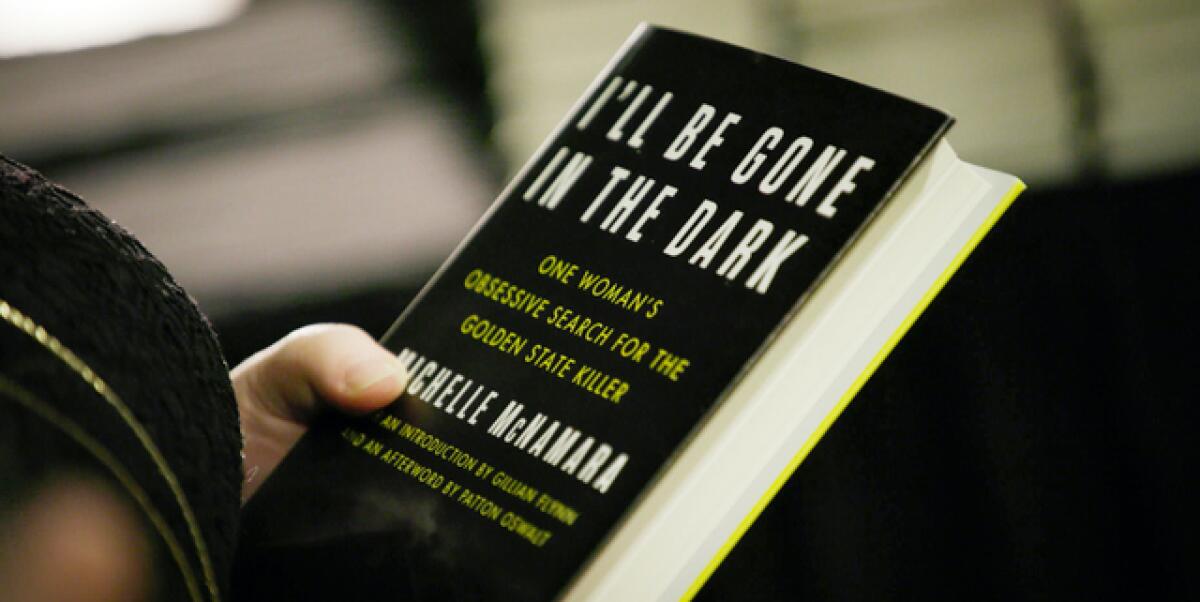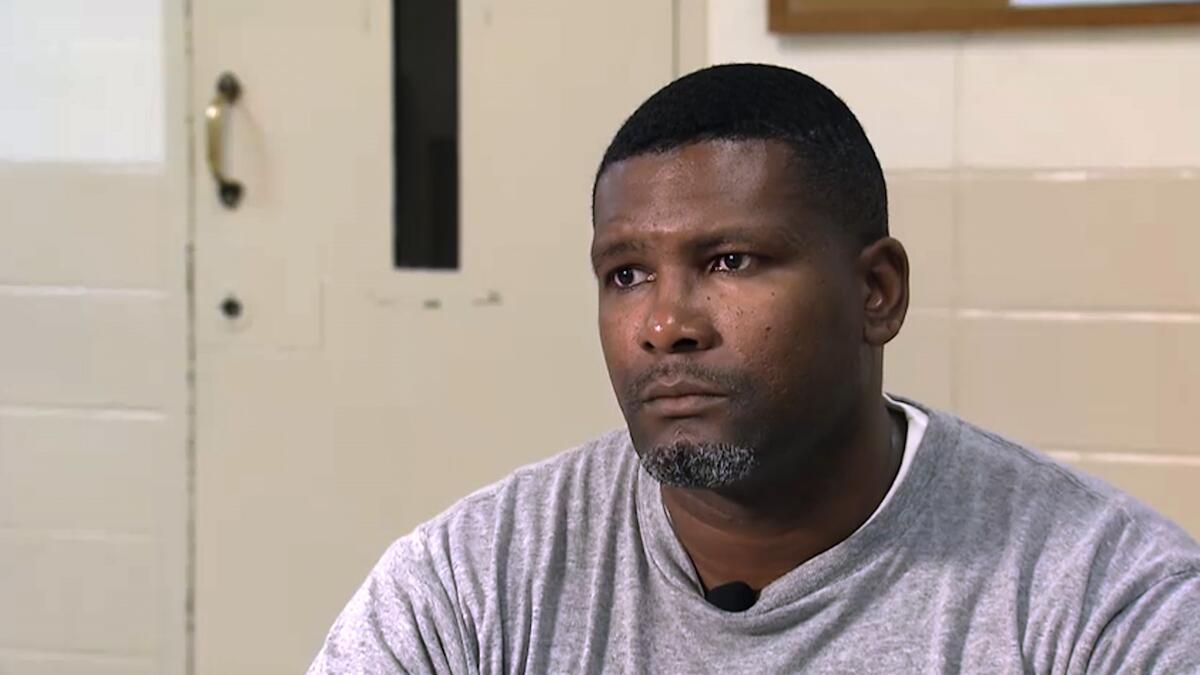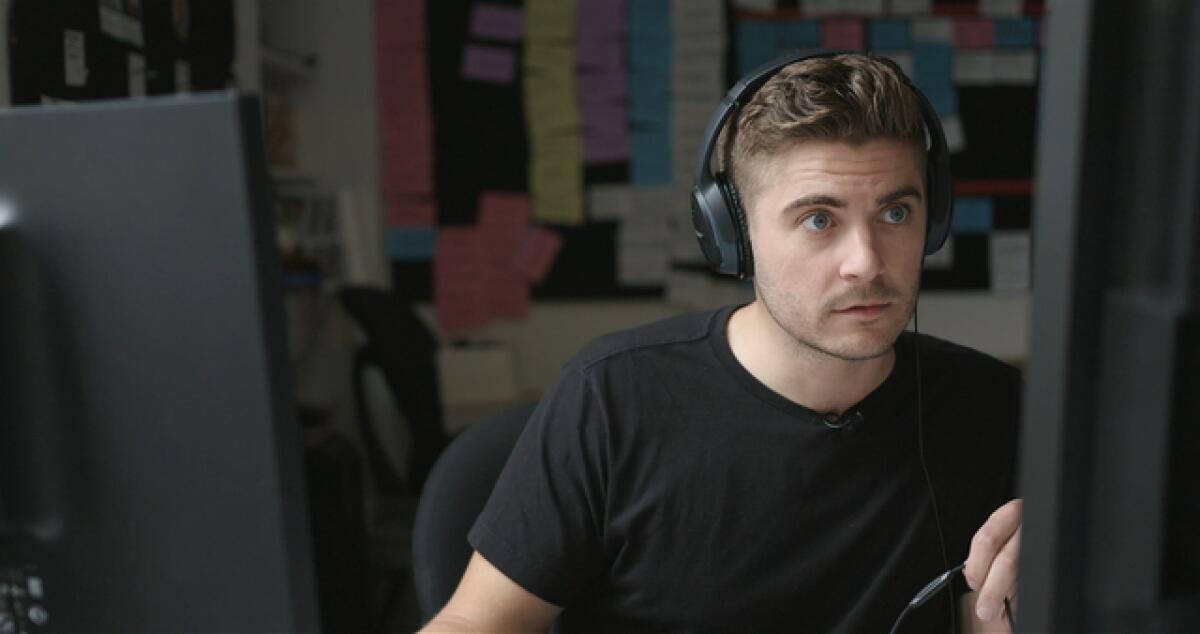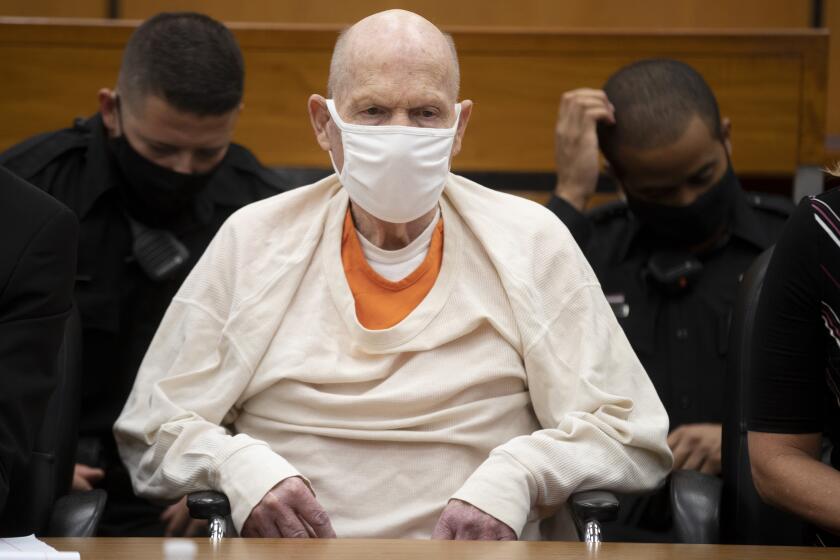True crime is one of TV’s top genres. Critics say it’s failing us

You’d be forgiven for believing that Joseph James DeAngelo, a.k.a. the Golden State Killer, was finally caught after half a century, 50 rapes and 13 murders because of “I’ll Be Gone in the Dark.” Based on Michelle McNamara’s bestselling book of the same name, published posthumously in 2018, the HBO docuseries, which weaves together McNamara’s personal narrative with her citizen detective work, premiered last summer the day before DeAngelo pleaded guilty to multiple counts of murder and kidnapping. But while McNamara’s investigation sometimes ran parallel to the detectives’ discoveries on the cold case, the timing was pure coincidence.
“Michelle and I were very close,” says Paul Holes, a retired cold case investigator in the Contra Costa Country Sheriff’s Office who features heavily in HBO’s adaptation, which premieres a follow-up special on Monday. “However, I’d been involved in the case for 24 years. We had a task force underway well before Michelle even knew about the case, and her involvement with the case didn’t cause us to work any harder, nor did any of us pay any attention to what was in her book. Michelle brought attention to the case, but it didn’t cause the case to be solved [or for it] to be solved any faster.”
Subscriber exclusive: Of the many mysteries that surround the Golden State Killer, one of the most consequential is exactly how authorities caught Joseph James DeAngelo Jr. four decades after his murders began.
Despite the genre’s proliferation on streaming platforms and podcast networks, then, it’s unclear whether, and how much, true crime media has changed the way law enforcement conducts investigations or solves crimes. Even Holes, who co-hosts a podcast that crowd-sources clues, admits that. Like most things, there are nuances — “It’s complicated” was a phrase I heard from almost every source interviewed for this article.
Nor is it a new question to ask. Long-running series such as “Unsolved Mysteries,” “America’s Most Wanted” and Britain’s “Crimewatch UK” may feature sinister music and ham-fisted reenactments, but they’ve also helped nab criminals: “America’s Most Wanted,” which was canceled after 25 years in 2013 and revived earlier this year (with a team including, who else, Holes), recently marked its 1,187th capture, while “Unsolved Mysteries,” rebooted by Netflix in 2020, has helped to solve more than 260 crimes.
Kathleen McChesney, a consultant with 35 years of law enforcement experience — including at the FBI and the Seattle area’s King County Police Department, where she assisted on the Ted Bundy case — points directly to those programs as the start of a marriage of convenience between law enforcement and media. (Holes participated in an “Unsolved Mysteries” episode in 2001 to profile the East Area Rapist and Original Night Stalker, as the Golden State Killer was then known, just after he’d discovered they were the same man.) And while chat rooms and message boards may have taken precedence over calling into a show’s 1-800 phone number, the citizen detective community continues to thrive, and modern technologies have made it easier than ever for investigators to draw on the public for information.

Former Detective Chief Superintendent Steve Wilkins, whose cold case work was recently dramatized on BritBox’s “The Pembrokeshire Murders” and profiled in a documentary on the same platform titled “Catching the Game Show Killer,” believes that true crime media has affected how law enforcement catches suspects. From best practices — like better liaising with the families and securing crime scenes faster — to bad practices — such as the use of excessive force — he feels that the popularity of true crime programming coupled with instant access to information via social media has helped identify law enforcement failures. In fact, Wilkins directly credits “Crimewatch UK” with helping to capture and put away for life a murderer when new potential witnesses came forward after seeing the episode: “It enabled the public to participate and contribute to the investigations,” says Wilkins.
More recently, and closer to home, San Luis Obispo County Sheriff Ian Parkinson praised the “Your Own Backyard” podcast for helping to bring Kristin Smart’s alleged killer into custody. Chris Lambert, a singer-songwriter who grew up in the same town as Smart and remembers her disappearance during his childhood, created the podcast, which brought renewed interest to the 25-year-old case. “It’s been a puzzle and it’s a very slow process to find each of those little pieces,” Parkinson told reporters during a news conference this spring after the arrest of Paul Flores, the lead suspect in Smart’s disappearance and alleged murder. “Some of that information came to light through the podcast […]”
The HBO docuseries “I’ll Be Gone in the Dark,” executive produced by Patton Oswalt, documents the late Michelle McNamara’s quest to find the Golden State Killer.
Not everyone agrees that TV shows or podcasts like these are making a difference, though.
“I don’t think there is nearly enough [change happening],” says Christine Mumma, attorney for defendant Daniel Green in the killing of James Jordan (Michael Jordan’s father), recently profiled in IMDb TV’s “Moment of Truth.” “We’re seeing all this legislation happening across the country as a result of the George Floyd case, but we have these cases that are being used for fascination in true crime reporting rather than reform. In ‘Moment of Truth,’ it is all based on fact. It’s not theory. It’s not opinion. And I don’t think [shows like this are] being used for [reform] nearly enough. If it was, we would be looking at, a minimum, expanding recording of all interviews at police departments where what is happening behind closed doors is literally a matter of life and death, particularly for those who are vulnerable because of race, addiction or mental health.”
Mumma points to Netflix’s 2015 docuseries “Making a Murderer,” which sparked an outcry from viewers over treatment of a minor. In the show, Brendan Dassey, currently serving life in prison for his part in the murder of Teresa Halbach, was interviewed and confessed at age 16 without an adult present: “Why has that not triggered recording [procedure reform]?” (She also points to the interrogations of the Exonerated Five as depicted in Netflix’s scripted series “When They See Us.”) She continues: “There’s this denial that it’s not a common problem, and I think we’re really missing out. The point is that we don’t use these documented failures of our justice to push for common-sense changes.”
On the level of the individual case, the power of true crime has been apparent since Errol Morris’ 1988 film “The Thin Blue Line” helped exonerate Randall Dale Adams, wrongfully convicted of murdering a police officer. And in the wake of “Moment of Truth,” Mumma says, “there are things coming out of the woodwork,” from new information and witnesses to police officers who previously declined to testify expressing willingness to do so. But even these developments are no panacea in the fight to free Green, who has been imprisoned for 26 years for Jordan’s murder, a crime he’s denied committing from the beginning.
A revival of “Unsolved Mysteries” lands on Netflix at a time when true crime is all over TV
“Do I think that [the series] is going to impact the three judges who are going to make the decision about whether we get in back into court?” Mumma adds. “No, I don’t.”
It’s not surprising that the relationship between media and law enforcement seems so fraught, especially when both individually are historic perpetrators of systemic discrimination, particularly along lines of race and ethnicity. But Madison Hamburg, whose mother, Barbara Beach, was killed in 2010, is convinced that, if used in the right way, true crime TV can be of value in the hunt for justice — even in spite of the hurdles he’s come across in his own efforts to solve the crime, documented in HBO’s “Murder on Middle Beach.”

The series brought Beach’s perplexing daytime murder in the side yard of her affluent Connecticut home back into the spotlight, but Hamburg wanted to focus on the other victims — the entire Hamburg/Beach family — as he sought to exonerate his sister, his aunt and others identified as “persons of interest” by the local police department. Throughout Hamburg’s own detective work, he ran into one central problem: Detectives don’t want to share information.
“Whether or not [law enforcement] likes it, true crime, made in the public’s interest, puts pressure on police departments, their bosses, and even can incite change of hearts in their coworkers and can lead to breaks in the case,” says Hamburg. “We live in an age of information, where the public expects to be informed and can be empowered by that information.” (The Madison, Conn., police department did not respond to multiple requests for comment.)
From Netflix’s new ‘Unsolved Mysteries’ to ‘A Wilderness of Error,’ true-crime TV is rife with re-creations. But the trope raises ethical issues.
The media frenzy around a case, cold or otherwise, is a double-edged sword: It can be devastating for the family to relive the horror, even as the media’s attention may be able to grab the public’s attention — and put pressure on the police. A few years ago, Hamburg himself confided in an old friend who also happened to be an ex-FBI agent about his challenges with “Murder on Middle Beach.” He feared exploiting his mother’s story or his family, and was unsure whether airing it would make any difference. His friend asked him, “Would you rather find justice or the truth?”
“He felt that the two are not mutually exclusive, pointing to inherent flaws in our justice system,” says Hamburg, “but also that, sometimes, the truth isn’t prosecutable.”
More to Read
The complete guide to home viewing
Get Screen Gab for everything about the TV shows and streaming movies everyone’s talking about.
You may occasionally receive promotional content from the Los Angeles Times.








